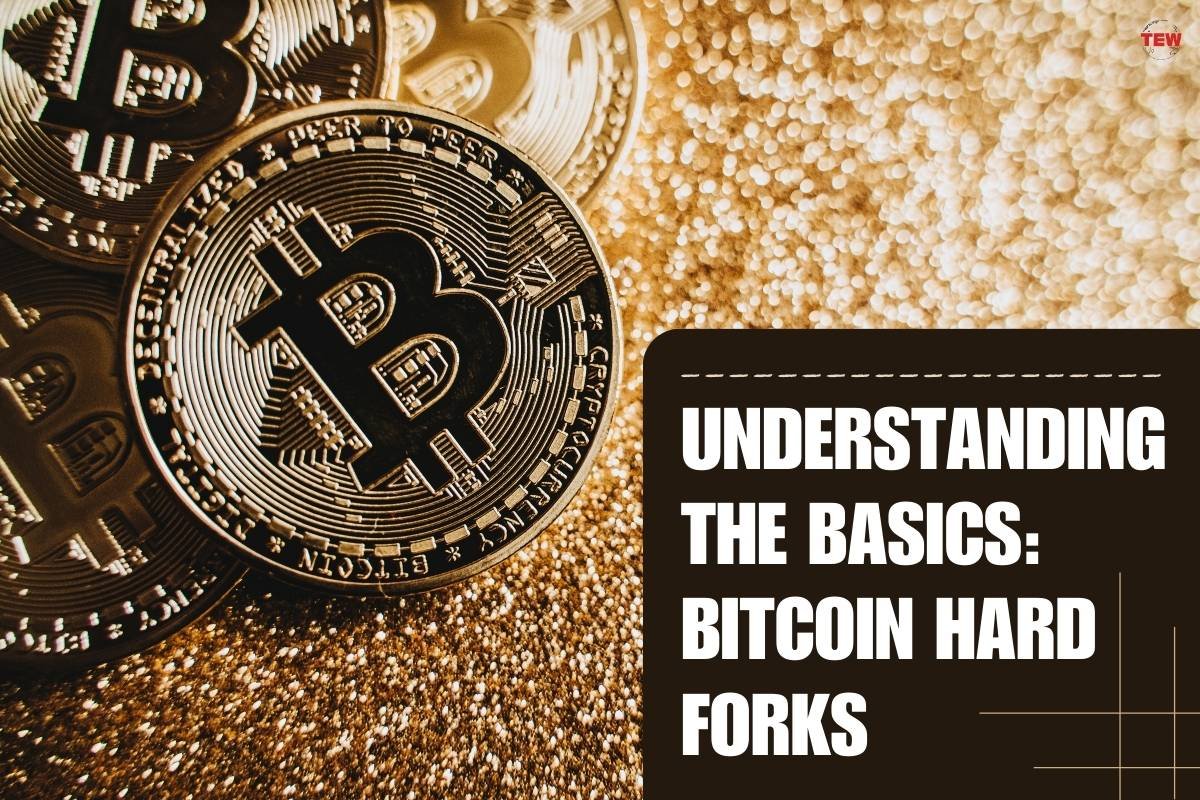In the dynamic world of finance, cryptocurrencies such as Bitcoin have established themselves as fundamental players. However, a unique challenge arises when there’s a lack of consensus within the Bitcoin community regarding its future direction. This situation leads to the phenomenon of Bitcoin hard forks, a critical concept for those involved in cryptocurrency trading.
Hard forks represent significant changes to the blockchain’s protocol, creating divergent paths in the technology and often leading to the creation of new currencies. This article aims to provide a comprehensive understanding of Bitcoin hard forks by examining their background, operational principles, prominent instances, their effects on the market, strategies for preparation, and potential future developments.
Visit https://gpt-definity.com/ it is the most popular of all the Blockchain software because it safe your cryptocurrency. You can reconcile your account history to see and assess the growth of your online assets and cryptos, such as Bitcoin and Tether, and close or modify any open position from a single screen.
The Genesis of Bitcoin Hard Forks
When Bitcoin was first introduced by its pseudonymous creator, Satoshi Nakamoto, it was a novel concept with a clear vision. However, as time passed, disagreements within the Bitcoin community emerged, and Satoshi Nakamoto left the scene in 2010. This departure paved the way for changes to Bitcoin’s protocol.
The first significant instance of a Bitcoin hard fork was the controversy surrounding Bitcoin XT in 2015. Bitcoin XT aimed to increase the block size, enabling more transactions to be processed in each block. However, this proposal was met with resistance from the Bitcoin community, leading to a contentious debate.
How Bitcoin Hard Forks Work
Bitcoin hard forks occur when there is a fundamental disagreement within the community regarding protocol changes. Understanding how they work requires a grasp of consensus rules and protocol changes.
Consensus rules are the foundational set of rules that all participants in the Bitcoin network must follow. Any changes to these rules require broad agreement among the network’s participants. When consensus cannot be reached on proposed changes, a hard fork can occur, effectively splitting the network into two separate chains.

There are two main types of forks: soft forks and hard forks. Soft forks are backward-compatible, meaning they allow nodes running old software to continue validating transactions. In contrast, hard forks are not backward-compatible and require all nodes to upgrade to the new rules.
Notable Bitcoin Hard Forks
Two of the most notable Bitcoin hard forks are Bitcoin Cash (BCH) and Bitcoin SV (BSV).
1. Bitcoin Cash (BCH)
Bitcoin Cash emerged in 2017 as a result of a contentious split from the original Bitcoin (BTC) chain. The main point of contention was the block size. Bitcoin Cash proponents believed that increasing the block size would lead to lower fees and faster transactions.
Bitcoin Cash features larger block sizes (8MB or more) compared to Bitcoin’s 1MB blocks. This allows for more transactions to be processed per block, potentially addressing scalability issues. Bitcoin Cash remains one of the most well-known Bitcoin forks.
2. Bitcoin SV (BSV)
Bitcoin SV, or “Satoshi’s Vision,” is another notable Bitcoin hard fork. It originated from a fork of Bitcoin Cash in 2018. BSV proponents, led by Craig Wright, aimed to restore what they saw as the original vision of Bitcoin outlined by Satoshi Nakamoto.
Bitcoin SV emphasizes large block sizes (up to 128MB) and a commitment to preserving the original Bitcoin protocol. However, this hard fork remains controversial due to ongoing disputes and legal battles surrounding Craig Wright’s claims to be Satoshi Nakamoto.
The Impact of Bitcoin Hard Forks
Bitcoin hard forks have a significant impact on the cryptocurrency ecosystem.
- Price Fluctuations and Market Reactions

When a hard fork is announced or occurs, it often leads to price volatility. Traders and investors react to uncertainty about the future of the forked coins, and this can result in substantial price fluctuations for both the original and forked cryptocurrencies.
- Forks as a Means of Innovation and Experimentation
Hard forks can also serve as experiments to test new ideas and improvements to the Bitcoin protocol. While not all forks succeed, they contribute to the ongoing evolution of the cryptocurrency.
- Community Divisions and Debates
Hard forks can create divisions within the cryptocurrency community, with different factions advocating for their preferred version of the blockchain. These debates often revolve around issues such as scalability, security, and decentralization.
Preparing for a Bitcoin Hard Fork
If you hold Bitcoin during a hard fork, it’s essential to take precautions.
- How to Safeguard Your Assets During a Hard Fork
To safeguard your assets, it’s crucial to store your Bitcoin in a wallet where you control the private keys. This way, you can access your forked coins if you choose to do so.
- Wallet Compatibility and Exchanges’ Stance
Not all wallets and exchanges support forked coins. Research wallet compatibility and check with exchanges to understand their policies regarding hard forks.
- Staying Informed About Upcoming Forks
Stay informed about potential hard forks by following cryptocurrency news sources and official announcements from the development teams involved.
The Future of Bitcoin Hard Forks
The future of Bitcoin hard forks remains uncertain.

- Potential Forks on the Horizon
There are ongoing debates about block size, scalability, and governance within the Bitcoin community. This could lead to additional hard forks in the future.
- The Role of Hard Forks in Bitcoin’s Evolution
Hard forks will continue to play a role in shaping the future of Bitcoin. They are a mechanism for implementing changes and innovations, even if they come with controversy.
- The Ongoing Debate Over Scalability and Governance
Scalability and governance issues will likely remain at the forefront of the cryptocurrency space, with hard forks being one of the tools used to address them.
Conclusion
In conclusion, Bitcoin hard forks are pivotal events in the cryptocurrency world. They represent not only technical changes but also the ideological divisions and debates within the community. Understanding their history, mechanics, and potential impact is essential for anyone involved in the world of cryptocurrencies as it continues to evolve and adapt. Stay informed, be prepared, and consider the implications of Bitcoin hard forks as you navigate this exciting and ever-changing landscape.




